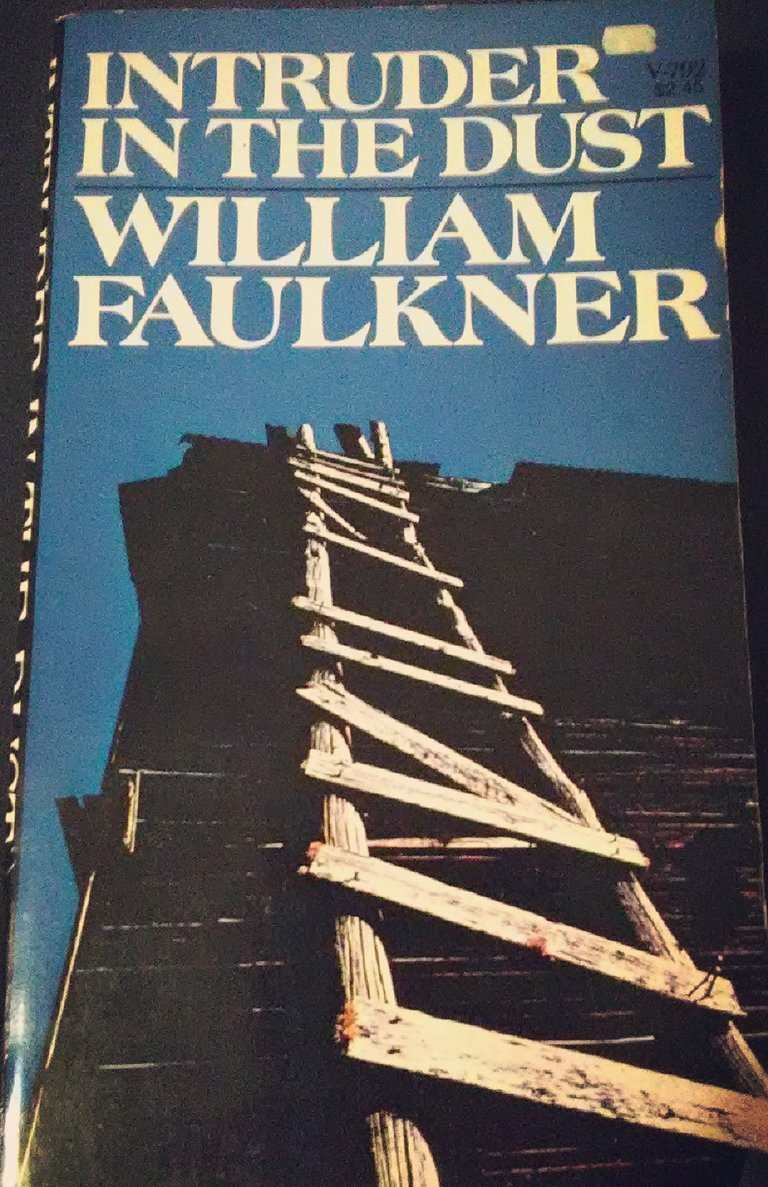Crazy Dog – #freewrite No. 13, Day 888
I donʼt know about a crazy dog, but I do remember the mad dog in “To Kill a Mockingbird.”
It seems like the mad dog was a metaphor for the mob that Atticus dispelled later in the novel. I read “Mockingbird” in high school, so I could have the timeline slightly wrong.
I recently read “Intruder in the Dust” by William Faulkner. He also shares a scene about a mob being broken up. I think it was the sheriff that did it, in the same way that Atticus did, by calling out individual members to kind of break up the group mind/energy (but see Addendum below).
Iʼm pretty sure “Intruder in the Dust” was written before “Mockingbird.” I wonder if thatʼs the first time the dynamics of a mob were explored in that way in fiction. At any rate, Iʼll bet that Harper Lee had read Faulkner, and was building on his work when she wrote that scene.
T.S. Eliot supposedly said that great writers donʼt plagiarize, they steal.
Iʼd prefer to think of it as building and going further.
Addendum: research after the five-minute freewrite
“Intruder in the Dust” was published in 1948; “To Kill a Mockingbird” in 1960.
Faulknerʼs crowd in the street never actually becomes a mob; at one point the protagonist merely imagines that they do, but the crowd, instead, breaks up and goes home.
Faulkner does associate the imagined mob with a mad dog that gets shot in the street; maybe that and the common setting and circumstances (the South with an accused man threatened by a lynch mob) called to mind “To Kill a Mockingbird.” I think I misremembered the scene because 1) Faulknerʼs writing is so damned complicated, who can comprehend it, let alone remember it? and 2) it made a more solid point if the two scenarios were exactly the same.
The contrast between how the mobs are turned back in the two novels (as well as the mad dog link) does support my hypothesis that Lee was building on Faulkner and going further. Both times that the crowd/mob is addressed in Faulkner, the actual crowd by the sheriff early in the novel and the imagined mob by the protagonist later, it is addressed as a unit. Leeʼs addition to the scenario is her exploration of group psychology and the idea that a mob could be broken up by an appeal/challenge to each person as an individual.
At any rate, I wanted to honor the ʻrulesʼ of the five-minute freewrite and not rewrite my first draft, but I also wanted to make sure the facts were right. Hopefully everyone went ahead and read the addendum.
Also, Iʼd love to hear if anyone can think of another mob being broken up in fiction, when that story was written, and how the breakup was done.
